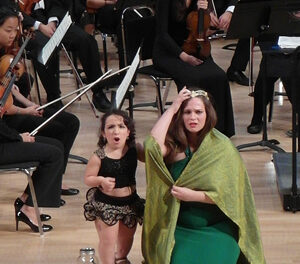When soprano Margaret Cusack was indisposed and could not deliver the Chausson vocal work that was programmed for its June 29 faculty chamber music concert, the Brevard Music Center did not miss a beat. Bruce Murray (the artistic administrator and dean) and Andrew Goldman (who is teaching music literature this summer at the Center) put together a vocally-inspired suite in E-flat major for piano four hands and performed it as the first work. The two pieces in the suite were the second (slow) movement of Hermann Goetz's four-hand sonata for piano in G minor Op. 17 and the opening movement of a transcription by György Kurtág of the J.S. Bach cantata Gottes Zeit ist die allerbeste Zeit. It was my first hearing of compositions by Goetz (1840-76) and Kurtág (b.1926) and I hope not my last. The choices were both contemplative movements, the first very much reflecting the Wagnerian environment that inspired Goetz and the second reflecting the theme of the original Bach work, which translates as "God's Time is the very best Time." Considering the minimal time available for preparation, the performance was admirable.
Marianne Gedigian, flute, and Craig Nies, piano, performed Franz Schubert's Introduction and Variations on "Trockne Blumen." Schubert used his song from the famous cycle Die schöne Müllerin as the basis of this remarkable set of seven variations. There is a symmetry in the work, with Variation IV (the centerpiece of the seven movements) involving an intimate collaboration between the two instruments including long passages where they move in thirds. Counting outward from the centerpiece, there is a pairing of Variations III and V, both of which start with brief storm clouds in the piano. Likewise, there is a pairing of Variations II and VI, both of which contain florid passages of rapid flute playing. Ms. Gedigian displayed fine clarity in Variation I and remarkable technique in the many rapid passages. Mr. Nies's execution of the piano collaboration demonstrated subtle familiarity with the Lied on which the variations are based. By the time the players reached the final Variation VII, the flautist was taking advantage of brief respites from the almost-continuous flute excursions to quickly wipe her lips. This must be a killing piece for the embouchure. Virtuosic players delivered this virtuosic piece soundly.
The third work on the program brought together four relatively new faculty members, at least compared to some other members of the faculty who have spent twenty-plus summers in the mountains teaching talented students at the Brevard Music Center. Violinist Maria Sampen is in her third year, violist Jennifer Kozoroz and cellist David Premo in their second year, and pianist Donna Lee has seniority as a fifth-year faculty member. The four joined forces to deliver Gabriel Fauré's Piano Quartet No. 1 in C minor, Op. 15. In his program notes, Andrew Goldman says, "Fauré combines the instruments expertly, often using arpeggios and other techniques to allow the piano to blend more lyrically with the strings. The strings in turn mimic the piano with their harsher pizzicato sounds." In this performance, the players took advantage of Fauré's compositional skill to deliver a final product that was balanced. They displayed a sensuous French (or perhaps Belgian) string tone that never needed to be stressed to balance the piano. Memorable moments occurred in both the second movement, a Scherzo in which the piano plays a dazzling role while the string players perform with a crisp pizzicato, and in the fourth movement, an Allegro Molto.
The evening began in E-flat major and ended in C minor, the relative minor key. The seriousness that composers frequently associate with C minor never became solemnity and did not get in the way of the triumphant quality of the final movement of the Fauré, a fitting conclusion to a fine evening of chamber music that reflected the beauty of the human voice, even though none of the works was vocal.











